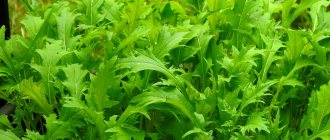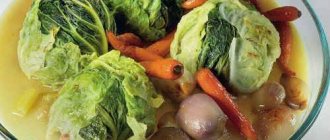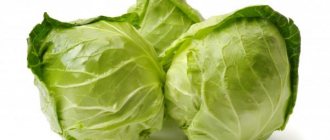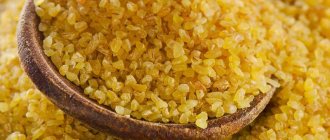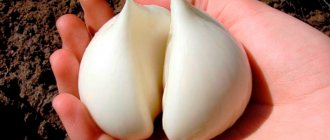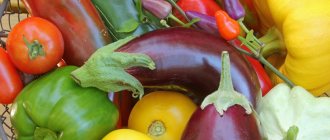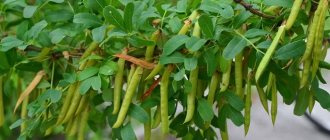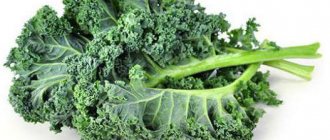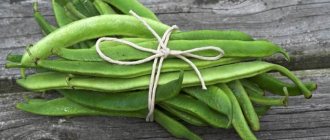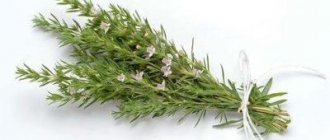Kale seeds do not appear on our shelves very often. That's why so few people know her yet. But this is an amazing culture! Due to its high decorative value in European countries, it is often used to decorate flower beds. In addition, curly cabbage is incredibly healthy: in terms of minerals and vitamins, it is significantly superior to its white cabbage relative.
Appearance and features of kale cabbage
Kale is easy to distinguish from all other types of cabbage - it does not have a head. Externally, kale with curly leaves is similar to lettuce. The culture is better known as an ornamental one - gardeners are attracted by the unusual curly leaves. Kale cabbage has many other names - for example, bruncol or grunkol.
Brief botanical description:
- Belongs to the cruciferous family.
- The leaves are corrugated or carved along the edge, collected in a rosette. Depending on the variety, they are evenly distributed over the stalk or concentrated at the top. Leaf colors range from shades of green to purple and red. The surface ranges from smooth to bubbly.
- The stalk is unprecedentedly tall - it grows more than 1 m.
The leaves of kale curl as soon as they appear - by this sign it is easy to distinguish seedlings of this species from other types of cabbage.
Plant characteristics
Characteristics of kale:
- The leaves themselves are edible, the stalk is hard and tasteless.
- The harvest is harvested several times per season - some leaves are torn off, and others grow in their place.
- In the southern regions it can be grown in one area for several years in a row. After overwintering under cover, it produces an early harvest of vitamin leaves.
- Collard greens are in demand in cooking. The leaves are eaten fresh, made into salads, and a variety of dishes are prepared - from stewed cabbage to chips.
- 100 g contains 3.3 g of protein (1/2 the daily value), 8 g of carbohydrates and 0.7 g of fat. Calorie content – 50 kcal per 100 g.
- High frost resistance - the plant can withstand frosts down to minus 15°C.
Origin
It is not known for certain where kale cabbage was first grown. According to scientists, this is the oldest variety of wild cabbage, but our gardeners have only recently become interested in kale.
It is known that kale was grown as early as the 4th century BC. in Ancient Greece. Today this crop is grown everywhere - in Holland, Turkey, Japan and other countries.
Chemical composition of kale cabbage
1 gram of cabbage contains 1.35 mg of calcium. For comparison: 1 g of cow's milk contains only 1.13 mg. Calcium from cabbage is absorbed 25% better than from milk.
And considering that many people are intolerant to milk protein, kale is an essential source of calcium for the human body.
Cabbage, like meat, contains 18 amino acids, so it can easily replace meat. 200 g of cabbage contains the daily requirement of protein, and it is easier to digest than meat.
Kale contains a large amount of provitamin A. Therefore, it is an excellent means for preventing vision. And the content of chlorophyll, a high concentration of Omega-3 fatty acids, the substances sulforaphane and indole-3-carbinol make it possible to use kale for the prevention of cancer.
Sulforaphane is an organic compound of plant origin that has anticancer and antibacterial effects.
Source Wikipedia
Cabbage contains large quantities of vitamins C, A, K, PP, group B. The mineral complex is represented by phosphorus, sodium, calcium, potassium, iron, zinc, magnesium, zinc, sodium, selenium, magnesium.
It contains a large amount of plant fiber, which has a beneficial effect on the gastrointestinal tract, improves digestion, and prevents constipation.
Cabbage is 80% water, which is why you feel full for a long time.
Variety of species
Kale leaf cabbage is divided into types according to the following characteristics:
- Leaf structure:
- curly;
- wavy;
- fringed.
- Cabbage height:
- short – up to 40 cm;
- medium height – 40-60 cm;
- tall - up to 1 m or more.
- Ripening time:
- early ripening;
- mid-season;
- late ripening.
Among the varieties of kale, there are many decorative ones - these are the results of the work of breeders from Holland and Japan. The Dutch were the first to develop cabbage with red and pink leaves, and then the Japanese gave it a spherical shape. Today, a huge number of varieties have been bred, among which you can find cabbage both for food and for decorating the garden.
Leaf cabbage Reflex F1
A popular hybrid for dietary nutrition. It has excellent taste. Plant height reaches 90 cm.
The growing season is 80 days. The leaves are dark green, corrugated, collected in a semi-vertical rosette. Fruiting lasts until late autumn. This hybrid is unpretentious and productive.
Tuscany (Italian black kale)
The leaves are dense and elastic, oblong, long, dark green in color, with a bluish tint. The surface is bubbly. The leaves are slightly curly, in appearance they resemble Savoy cabbage, only the leaf shape of these cabbage varieties is different.
The variety is frost-resistant, can withstand temperatures down to minus 15 °C. Leaf length is 60 cm. Ripens 60 days after planting. The harvest begins two months before frost. Tuscan kale has almost no odor, only the aroma of ordinary white cabbage can be heard slightly. Contains a lot of Omega-3 (fatty acids), vitamin C and lutein.
Red Russian Kale
The leaves are intense green, openwork, and distinctly wrinkled. Their surface is dotted with scarlet veins. In the cold these veins turn purple. A very frost-resistant variety - can withstand frosts down to minus 18°C.
The variety is unpretentious, good as a vegetable and garden crop. The leaves of red Russian kale are tender, sweetish, and have a spicy flavor.
Redbor F1 cabbage
One of the most popular hybrid varieties. The leaves are dense and curly. Stem height – up to 80 cm. Belongs to the late-ripening group. Plant weight – 0.2-0.7 kg. Excellent taste, the variety is used for decorative and culinary purposes.
The rosette is semi-vertical, the color of the leaves is dark purple. Very frost-resistant - can withstand frosts down to minus 18°C. After frost, the leaves become juicy and soft. This beautiful plant is often used to decorate dishes. The appearance of Redbor F1 is affected by the amount of sun and soil moisture.
Cane kale
One of the highest grades. Kale cane cabbage reaches a height of 1.9-2 m. Its stem is hard and durable. They say that real canes can be made from this stem.
The rosette, concentrated at the top, is made up of long, corrugated leaves of rich green color.
Scotch kale (or curly blue)
In England, kale is known as Scottish or Siberian kale. Scottish kale leaves are not as crisp and curly as other varieties. It is characterized by increased frost resistance. Suitable for growing in northern regions. Here the culture reaches maturity in 80 days.
This is a hybrid variety with early ripening. The plant is compact, height – 90 cm. Leaves – bright green. It has high productivity. Good in salads, suitable for long-term storage. Can be frozen. The seedling growing method is recommended.
Other varieties
Kale has dozens of other interesting varieties, including:
- Tintoreto. Of all the varieties, it has the lightest leaves - they are a soft light green color. It is used for decorative purposes.
- Scarlet. Mid-early cabbage. It is distinguished by an interesting color transition in the color of the leaves. They are first green, then purple, and after frost they turn purple-blue.
- Green. Similar to Red Kale, but the leaf color is dark green. The leaves are covered with a waxy coating. The bush is large, its purpose is universal.
- Cadet. Medium late variety, tolerates frost well down to -15 degrees Celsius. The leaves are curly, tender, there are a lot of them on the bush. Leaf color is green.
Kale "Tintoreto"
Kale "Scarlet"
Kale "Green"
Kale "Cadet"
Cabbage redbor recipes. Features of growing cabbage redbor f1
Redbor f1 kale is a hybrid variety and belongs to the curly-leaved varieties of ornamental cabbage. Like many ornamental types of cabbage, it is a biennial plant. Therefore, it begins to bear fruit only in the second year. In most Russian dacha plots they play an exclusively decorative role. But this is a waste of space because this type of cabbage contains much more crude protein, sugar, vitamin C and carotene than other types of cabbage. This variety of cabbage has a very pleasant taste and does not require a lot of fat for cooking.
This hybrid has a very beautiful appearance. It reaches a height of 70-150cm. The leaves are dark burgundy and palm shaped. The height of this plant depends on the time of year it is planted. If you want to get a tall plant, then the seeds need to be sown at the end of March. Then, after 30-40 days, the cabbage bushes must be transplanted to a permanent place of growth. This type of cabbage is not afraid of frost and feels great even if it is covered with snow. After surviving the first frost, the leaves of this plant become softer and juicier.
The appearance of redbor f1 kale depends on the amount of sunlight affecting the plant. Soil moisture is of great importance. This is especially true during the hot season. Before planting this variety of cabbage, it is necessary to well fertilize the plot of land on which you plan to plant redbor f1 cabbage.
Pros and cons of growing
Benefits of Kale:
- Undemanding to growing conditions and care.
- Resistant to temperature changes, heat, cold, frost.
- Unique composition, many vitamins and nutrients.
- High yield.
- A large number of varieties.
- Decorative.
- Disease resistance.
- The leaves grow quickly - you don't have to wait long for the harvest.
Flaws:
- Needs frequent watering.
- Does not take root well after transplantation.
- It has a number of contraindications - for people with kidney disease.
- Increased photophilia.
Calorie content of kale cabbage
With increased nutritional value, a huge content of vital biologically active substances, minerals and vitamins, kale is a low-calorie product. 100 g of curly cabbage contains:
- proteins – 4.3 g;
- carbohydrates – 8.9 g;
- healthy fiber – 3.6 g;
- vegetable fats – 0.9 g.
Calorie content is only 48 kcal.
Advice! Kale cabbage is an excellent alternative to meat, useful for anemia, long-term diets and fasting.
Kale is suitable for people who want to lose weight, for complete nutrition during fasting periods or for convinced vegetarians
Benefits and harms
Kale is a unique source of nutrients. This is a low-calorie and easily digestible product, its use:
- strengthens the immune system;
- improves overall well-being;
- has anti-inflammatory and antioxidant effects;
- lowers blood cholesterol levels;
- removes waste and toxins;
- improves vision - strengthens the retina, is a preventative against cataracts;
- strengthens teeth;
- improves skin condition;
- slows down the aging process.
Despite all the benefits of kale, kale can be harmful to people with stomach diseases. Collard greens can cause exacerbation of gastritis, chronic diarrhea, flatulence, peptic ulcers, and dysbacteriosis. Also, a negative effect can be had on the thyroid gland if there is a chronic disease of this organ.
Landing dates
Kale, like white cabbage, can be grown in two ways - seedlings and direct sowing of seeds in the ground. The seedling method allows you to get an early harvest.
Landing dates:
- Seeds are sown in open ground at the end of April or in the first ten days of May - the exact timing depends on the climatic characteristics of the region.
- Seeds for seedlings are sown at the end of March or in the first ten days of April.
- Seedlings are planted in open ground in the second half of May.
Wonderful kale cabbage: cooking recipes from simple to complex
Many people perceive the browncolleaf plant as an ornamental one, due to its attractive, unusual appearance. However, this is a nutritious, healthy product that is best used for its intended purpose, that is, as food.
Basic rules: how to cook kale
Do you use kale often?
Not really
Only cabbage leaves are suitable for eating, since its stems are excessively tough. The petiole does not contain a record amount of trace elements and minerals, so it can be safely thrown away.
- In dietary nutrition, salads made from fresh leaves that have not undergone heat treatment are recommended. They retain more nutrients.
- To release and easily absorb microelements, it is advisable to chop the salad finely, or better yet, grind it in a blender.
- The first foods that go well with kale are nuts, tomatoes, garlic, green onions, basil, cilantro, parsley, and celery.
- To dress salads, nutritionists advise using extra virgin olive oil, balsamic or apple cider vinegar.
- Low-fat sour cream and eggs go well with cabbage.
You can prepare a salad with meat, poultry and even fish. It neutralizes excess fats well and allows the body to process them efficiently. Therefore, it goes well with smoked meats, bacon, and fatty pork.
Fermented kale
Like regular white cabbage, kale retains its beneficial properties when fermented. To do this, you should choose beautiful, large leaves.
Ingredients
- Kale cabbage – 1 kilogram.
- Carrots – 1 kilogram.
- Purified water – 1 liter.
- “Extra” salt - 1 heaped tablespoon (30 grams).
- Granulated sugar – 1 level tablespoon (20 grams).
Cooking method
Sort the leaves and wash under running cold water. Cut into strips of one and a half to two centimeters. Wash the carrots, peel them, grate them on a fine grater. You can grind it in a blender. Place everything in a large bowl and mix, pressing lightly, as if kneading dough, to release the juice.
Prepare the brine from water, sugar, and salt according to the usual procedure: stir, boil, cool slightly. You can add pepper to it to taste. Place cabbage and carrots in glass jars, compacting tightly. Pour in more hot brine, close with a nylon lid, and leave for three days at room temperature. After this, it can be eaten; it is better to store it in a cellar or refrigerator.
Kale chips
This delicious product, which children love so much, can be made not only from potatoes. Many people praise the browncollet lettuce chips.
Ingredients
- Cabbage leaves – 0.1 kilograms.
- Olive oil – 1 tablespoon (20 grams).
- Salt, pepper - to taste.
Cooking method
Wash the cabbage leaves under running water and place on a paper towel until no drops of moisture remain. Cut or tear them into small pieces with your fingers and place in a bowl. Drizzle the cabbage with olive oil, salt and pepper.
Preheat the oven to 140–160 degrees. Line a baking sheet with parchment or baking paper. Place the vegetable pieces in one layer so that their edges do not touch. Bake for 15-25 minutes until crispy.
Russian salad with kale
If you think that kale is popular only in the West, then you are mistaken. Its Siberian variety is successfully cultivated in Russia. Let's look at the recipe for Russian salad with this vegetable. It is easy to prepare, and the ingredients can be found at your nearest store.
Ingredients
- Kale leaves – 0.2 kilograms.
- Champignons or oyster mushrooms – 0.15 kilograms.
- White beans (boiled or canned) – 0.1 kilograms.
- Hard cheese – 0.1 kilograms.
- Walnuts (chopped) – 30 grams.
- Extra virgin olive oil – 2 tablespoons (40-50 grams).
Cooking method
Finely chop the kale leaves and place in a bowl. Press them with your hands so that they release the juice. Cut the cheese into tiny cubes or strips. Chop the mushrooms and fry over low heat until fully cooked. If champignons are not available, you can use canned or fresh mushrooms, after soaking or boiling them.
The nuts are crushed in a mortar or using a blender, and then mixed with olive oil. Place all ingredients in a bowl, stir, pour over the resulting sauce. Some people add basil for flavor.
Kale and spelled salad
For those who were surprised by the unknown word in the name, it is worth explaining: spelled is a special type of durum wheat. Ksh from this product was once very popular. The gluten content in it is quite low, so it can be consumed without much fear even by those who are intolerant.
Ingredients
- Kale cabbage – 200-300 grams.
- Spelled – 0.5 cups.
- Vegetable broth - 1.5 cups (350 grams).
- Fresh pomegranate seeds - 0.25 cups.
- Lemon juice obtained from one citrus fruit.
- Garlic – 1 clove.
- Parmesan shavings – 0.25 cups.
- Extra virgin olive oil – 2 tablespoons (40-50 grams).
- Pepper - to taste.
Cooking method
Place the spelled in a medium saucepan and cover with vegetable broth. Place on the fire, bring to a boil, then reduce the heat to low and simmer for 25–30 minutes. Rinse the resulting porridge, transfer to a salad bowl, let cool, mix with pepper and salt.
Wash the cabbage, cut into small pieces, and drain so that it releases its juice. Cut the garlic into thin slices or strips. Mix all the ingredients in a salad bowl, mix everything thoroughly, add olive oil. It is permissible to add chopped walnuts, dried cherries, and chopped prunes to this unusual and healthy salad to taste.
Vegetable cream soup from kale cabbage
It is difficult to imagine a healthy diet without soup. Therefore, it is worth knowing that you can prepare such a nutritious, super-vitamin first course from kale.
Ingredients
- Cabbage leaves – 0.5 kilograms.
- Potatoes – 3 pieces.
- Onion – 1 piece.
- Lemon – 1 piece.
- Peeled pumpkin seeds – 50 grams.
- Olive oil – 2 tablespoons (40–50 grams).
- Salt, pepper - to taste.
Cooking method
Peel the potatoes and cut into small cubes. Chop the onion as finely as possible. Rinse the cabbage leaves under running water and tear into large pieces. Heat olive oil in a saucepan, add potatoes, onions, kale. Fry the vegetables for ten minutes, stirring them constantly.
Fill with purified boiling water (preferably vegetable broth) in the amount of two liters, add lemon juice. Reduce heat to low. Cook for 22–35 minutes. The finished soup is ground in a blender until smooth. When serving, add soy cream and crushed seeds.
Planting seedlings
Kale, like any cabbage, lags behind in growth after transplantation and takes a long time to take root, so they prefer to sow it directly into the ground. But the seedling method also has its advantages - the harvest can be obtained a month earlier.
Sowing seeds for seedlings
Seeds are sown 1.5 months before transplanting into the ground. For cultivation, seedling boxes or containers are used. The best option is to sow in separate glasses, then the seedlings do not have to be picked. Picking is unnecessary fuss and transplantation, which adversely affects the growth and development of cabbage.
Seed preparation:
- Soak for 20 minutes in heated water (45-50°C).
- Immersion in cold water for 5 minutes.
- Exposure in a weak (1%) solution of potassium permanganate – 20 minutes.
- Place in a damp cloth for 2-3 days. Seeds are germinated in a warm place.
- When the seeds hatch, they are sown in containers or a glass filled with soil mixture.
To grow seedlings, use a purchased substrate or prepare your own soil mixture from fertile soil and sand. Or another variant of the mixture is to take two parts of peat, part of humus, part of fertile soil and half of sand. Add 3 tbsp to a bucket of soil mixture. l. wood ash.
Sowing order:
- The seeds are carefully laid out on a moistened substrate - in rows or holes made. The interval between seeds is from 5 to 8 cm. The depth of seeding is 1.5 cm.
- The seeds are sprinkled with soil and compacted slightly with your hands.
- The crops are covered with transparent film or glass.
- Place the crops in a warm place. Every day the film is removed for a couple of hours so that the crops can be ventilated.
- When seedlings appear, containers are placed closer to sunlight.
For information on planting kale cabbage in seedling trays, watch the video:
Seedling care
Kale cabbage seedlings are cared for in the same way as any other cabbage seedlings:
- Water regularly as the substrate dries out.
- Ventilate the room in which the seedlings are located. But so that young shoots are not exposed to drafts.
- If the seeds were sown in boxes or containers, then the cabbage is planted in separate glasses - when the seedlings have a pair of true leaves.
- A week before planting, hardening is carried out and the seedlings are taken outside.
How to prepare a landing site?
The best place to grow kale is on flat areas or a slight hill. Preparing the area for cabbage:
- The soil. The culture grows well in neutral, humus-rich soils. The main condition is that the soil should not be acidified. The planting site is prepared in the fall - slaked lime or dolomite flour is added to remove acidity. Before digging, humus is added (3-4 kg per 1 sq. m), and in the spring, before planting seedlings, complex mineral fertilizers are applied (100 g per 1 sq. m).
- Lighting. Sunny or slightly shaded areas are suitable.
- Predecessors. Good ones are potatoes, onions, cucumbers. The bad ones are radishes and other cruciferous vegetables. Favorable neighbors are dill , celery, spinach, beets, beans, sage, potatoes, garlic, peas.
In acidic and poor soils, kale turns out bitter and its leaves are small. It is best to add dolomite flour to deoxidize the soil - 500 g per 1 square meter. m.
Transplanting
Seedlings are planted in open ground at the age of 45 days. By this time, it should have formed 4 leaves. The height of the planted seedlings is from 8 to 10 cm. The optimal temperature for planting is from +5 °C to +35 °C.
As soon as the danger of return frosts has passed, the seedlings can be planted in the ground. Disembarkation order:
- In the beds prepared in advance, dig holes at intervals of 30-40 cm. 50-60 cm are left between the rows. Dwarf varieties can be planted more densely.
- The depth of the hole is made such that the root system of the seedlings fits comfortably in it. The roots are covered with soil up to the first leaves.
- Before planting, the roots of the plants are dipped in mash made from ash and clay.
How to eat kale
You can eat it raw, make vitamin-rich salads with the addition of parsley, walnuts, basil, stew it, or cook vegetable stew.
In the Netherlands, to prepare the traditional dish “stampot”, it is mixed with mashed potatoes. Sometimes it is served with sausages. On the Black Sea coast of Turkey, a very tasty soup is prepared from kale cabbage. The Japanese use it as a drink. The French make delicious chips.
In order to feel great, it is enough to eat 50 g of kale per day.
Cooking recipes
Diet salad
To prepare it you will need:
- 0.5 kg kale cabbage;
- 1 can of canned white beans;
- 200 g cherry tomatoes;
- 1 piece each red onion and bell pepper;
- 1-2 tbsp. l. olive oil;
- Sea salt, balsamic vinegar - to taste.
Cut the vegetables into pieces and mix with the beans. Prepare a sauce from vinegar, oil and spices and season the salad with it.
Chips
Required Ingredients:
- 1 kg kale;
- Garlic, salt, black pepper - to taste;
- Olive oil.
Preheat the oven to 180 degrees, then reduce the temperature to 100 degrees.
Chop the cabbage and place it on a baking sheet lined with parchment paper. Salt, pepper, sprinkle with oil. Place in the oven and dry until done, without closing the door all the way.
Pancakes
Grind the cabbage leaves, add 2 eggs, flour, pepper, garlic and salt to taste. Fry in vegetable oil like regular pancakes.
Vitamin cocktail
To prepare it you will need:
- 5 kale leaves;
- 350 ml water;
- 2 pcs. celery;
- 1 tbsp. l. spinach;
- 1 banana;
- 1 green apple;
- Half a lemon;
- Honey and mint - to taste.
Beat all ingredients in a blender. The result is a sweet cocktail with a lot of pulp.
Cutlets
To prepare them, you need to take equal quantities of kale, carrots and onions and grind everything in a meat grinder. Combine everything and add 1 tbsp. l. semolina, 1 egg, 2 tbsp. l. sour cream, dill, salt and pepper - to taste.
Place breadcrumbs or flour on a plate, roll the cutlets in them and fry them in vegetable oil until golden brown.
Smoothie for weight loss
Required Ingredients:
- Kale cabbage – 0.250 g;
- 100 g low-fat yogurt;
- 1 tbsp. l. almond oil;
- 0.5 cups blueberries;
- ¾ glass of water.
Wash the cabbage and remove the stems. Place in a blender with the rest of the ingredients and blend until smooth. Drink in the morning on an empty stomach.
Sowing in the ground
To plant seeds in open ground, the area is prepared in the same way as for seedlings - digging with humus in the fall, and repeated digging with mineral fertilizers in the spring. Sowing begins when the soil warms up to +5°C. In temperate climates, such conditions usually develop by April-early May - the exact timing depends on the region.
Features of sowing kale seeds in open ground:
- Holes are made for the seeds, into which humus and wood ash are added. The distance between adjacent holes is 45 cm. Seeds are planted in rows, leaving 50 cm between them.
- The seeds are buried 1.5 cm, no more. I put 3-4 seeds in each hole. The crops are watered and covered with soil.
- The sown cabbage is covered with film to protect it from night cold snaps and return frosts.
- When the cabbage sprouts, which usually happens after 5-7 days, the film or spunbond is removed. The seedlings are thinned out - only one, the strongest sprout should be left in each hole.
The sooner you sow tall varieties of kale, the taller the cabbage will grow.
Caring for plants in the ground
The optimal temperature for the growth and development of kale is from +10 to +20°C. Care for kale in much the same way as other types of cabbage:
- Watering. To use water as economically as possible, circular grooves are dug around the plants. Water poured into the furrows does not spread but goes directly to the roots. During the dry season, the frequency of watering is increased. The soil should always be slightly moist. In hot weather, kale needs to be watered daily. The main thing is to prevent water from stagnating.
- Feeding. Organic fertilizing is applied every 3-4 weeks. It is important not to exceed the dosage - too much fertilizer can cause leaf rot.
- Hilling. An agrotechnical technique involves raking the soil to the roots. Cabbage is hilled when the plants reach a height of 20 cm.
- Weeding and loosening. As necessary, weeds are removed, if any appear, and the soil is loosened. To reduce the number of loosening and watering, the soil is mulched.
- Mulching. To prevent the growth of weeds and retain moisture, the soil is mulched - preferably with humus or compost. Mulching prevents root rot.
Frequency and composition of fertilizing kale:
| Period | Compound |
| Immediately after disembarkation | At intervals of one week, 4 feedings with humic fertilizers are carried out. |
| When the cabbage has gained green mass | Add mullein - dissolve 1 liter in a bucket of water. You can also use chicken manure by diluting it as required. |
| 2 months after the first feeding | Repeat the previous feeding. |
It is useful to water cabbage with herbal infusion. It is prepared like this:
- The barrel is filled 25% with water.
- Place fresh grass and weeds in a barrel - 10 kg per 100 liters of water.
- Add dried chicken manure - 2-3 kg per 100 liters.
- After the foam appears, the infusion begins to be stirred every day - this stimulates fermentation.
This manure-grass fertilizer is infused for 1-3 weeks - the period depends on weather conditions. When the foam stops appearing on the surface of the infusion, dilute it half and half with water and pour it over the cabbage.
Learn more about growing kale cabbage from the video:
Disease and pest control
The crop can be affected by various cabbage diseases - powdery mildew, clubroot, gray and gray rot, etc. The most common pests include aphids and cabbage flies. Weevils and slugs can also cause great harm. To minimize the likelihood of disease, it is not recommended to plant cabbage after unfavorable predecessors.
Hybrids are quite resistant to most diseases, but they also need prevention:
- Regular loosening of the soil to increase its breathability.
- Dusting with ash and tobacco dust helps prevent cruciferous flea beetles. The procedure has to be repeated because rain washes away the protective layer.
- Spraying with an infusion of onion peels or wormwood helps against many pests.
- Planting flowers that repel pests near the beds with kale cabbage - mint, marigolds, and saffron are suitable.
It is not recommended to spray kale with chemicals. It is better to use safe traditional methods. But if you can’t control the pests in any way, you can use fungicides - Hom, Topsin-M and others, and insecticides - Kemifos, Alit, etc.
Harvest and storage
When the plant height is 20 cm, the crop can be harvested. The timing depends on the variety; from germination to harvest it can take from 55 to 90 days. Cleaning is done in one of two ways:
- Partial cleaning. Young leaves are picked off. About the same as salad ones - those that pick off more leaves, leave smaller leaves. Soon they grow back - cleaning is repeated. Gradually the trunk becomes bare, the plant becomes like a small palm tree.
- Full cleaning. Trim the entire plant at once. Leave a stump 4-6 cm high. Over time, young leaves will appear on the stump.
In regions with warm winters, trimmed kale cabbage, having safely overwintered, produces early greenery in the spring. Leaves that are not harvested in time acquire bitterness and become tough. Only the leaves are eaten, the stalks are the stalks, and can be used as livestock feed.
After cutting, the leaves are stored in the refrigerator if they are consumed fresh, or in the freezer if stored for long-term storage. After freezing, kale becomes especially delicious - the leaves become aromatic and the bitterness completely disappears. The leaves can be stored in the refrigerator for no more than seven days, and it is advisable that they stand in a container with water.
Terms and conditions of storage
Fresh kale can be stored in the refrigerator for a week. Be sure to place the cuttings in clean, cool water without additives.
For long-term storage, kale can be frozen - it withstands this procedure perfectly without changing its special taste. The leaves should be pre-washed and dried. Place in even layers in bags or sealed plastic containers and freeze. Shelf life – 2 months. A defrosted product cannot be re-frozen.
The green, tough stem can be blended into a cocktail, salad dressing, or smoothie.
Reviews
★★★★★
Valeria N., amateur gardener, Ryazan region. Planted on the Redbor plot.
But it didn’t grow to a height of one and a half meters, since it had to be sown early in the spring, and I planted it already in July - as seedlings. She only managed to grow to 50 cm, and I didn’t get a harvest. This year I sow seedlings in April, and will also sow in open ground. ★★★★★
Angelina O., amateur gardener, Moscow region. I planted red kale cabbage on the property and added it to salads.
The taste is nothing special, the leaves are not juicy. They acquire juiciness after frost. Young leaves are rough. It's healthy, but you can't eat too much of it. In the summer it has enough competitors - lettuce, other types of cabbage, greens. It’s interesting that it doesn’t spoil after frost, but after 20 degrees of frost it didn’t survive and froze. Hide
Add your review
To grow kale cabbage, the most ordinary care is enough - it is truly an undemanding, and most importantly, frost-resistant vegetable. And if you don’t like the taste of this unusual cabbage, then you can always enjoy its external beauty.
0
0
Copy link
